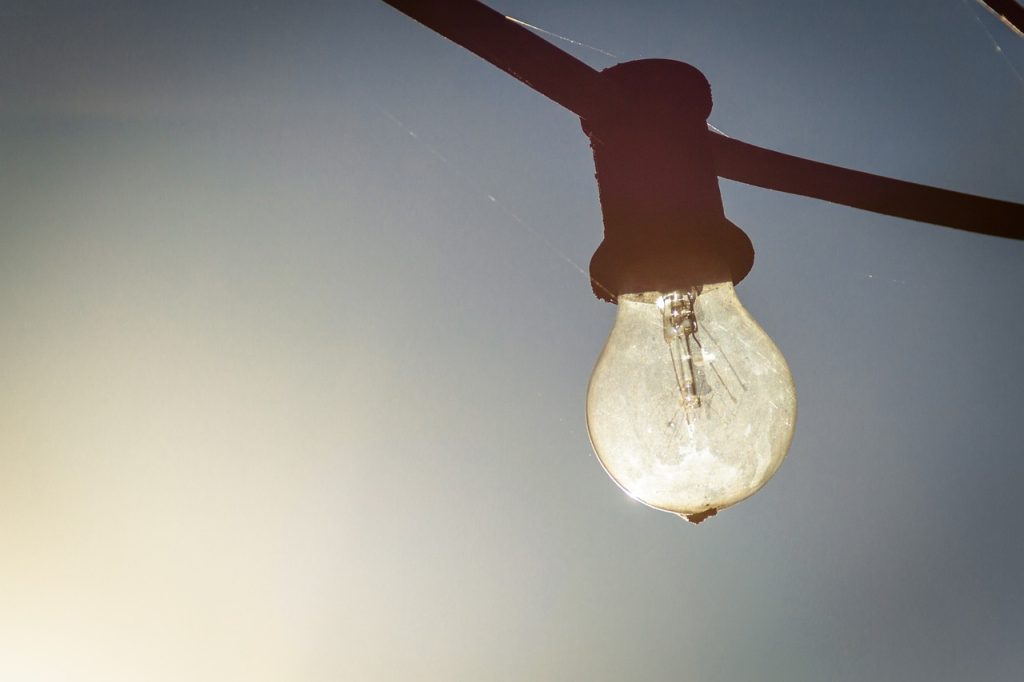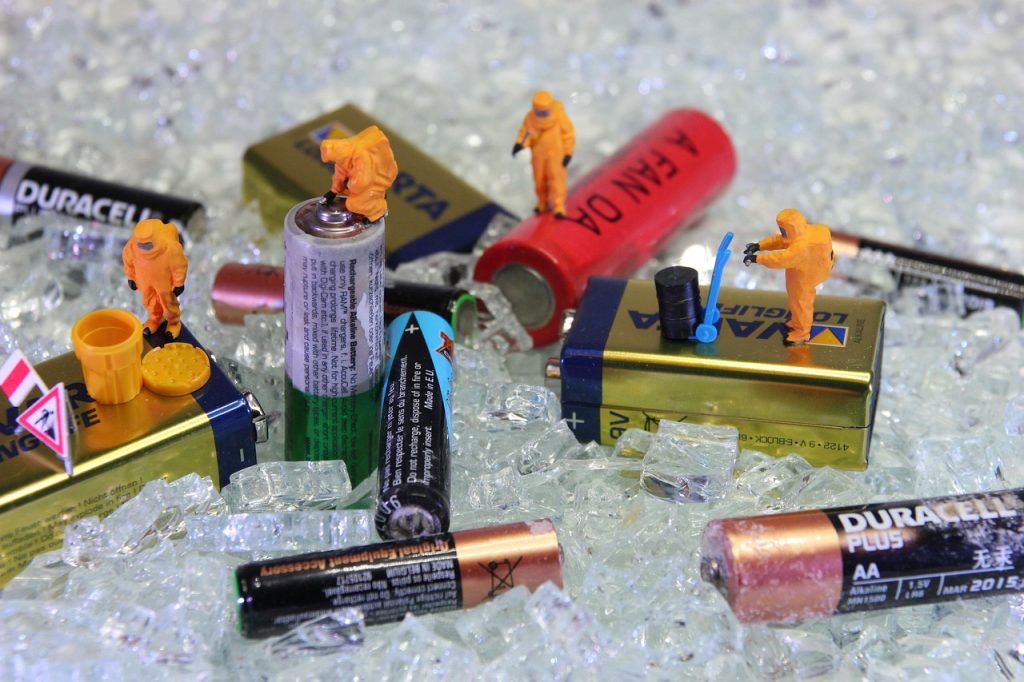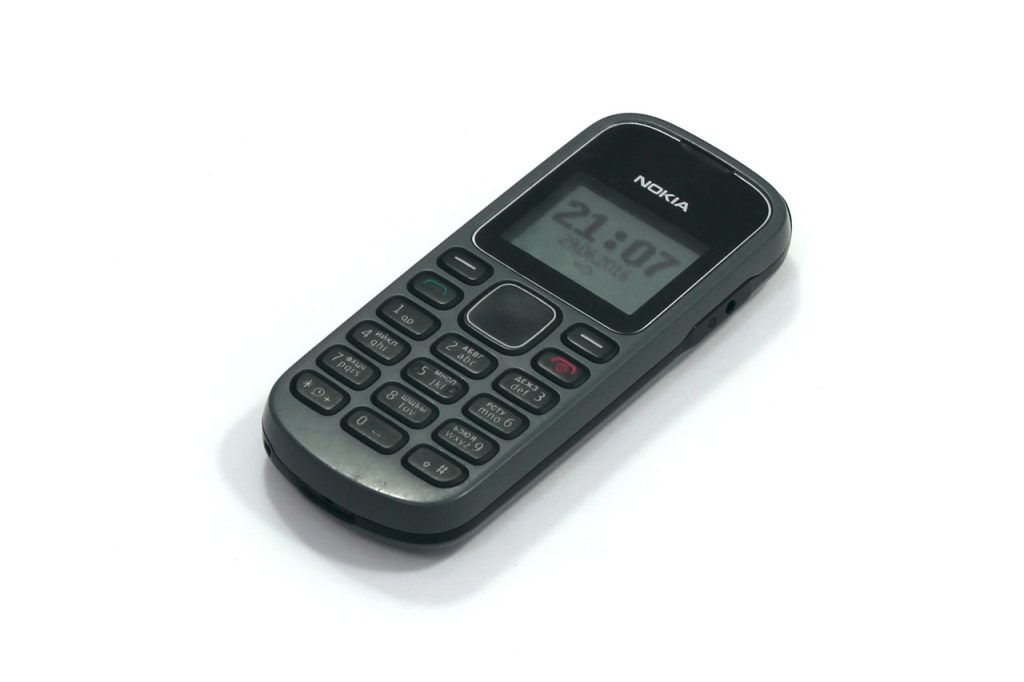- Understand the importance of recycling light bulbs, particularly CFLs and LEDs.
- Locate a local collection point for bulb recycling, such as businesses, public facilities, or local waste disposal centers.
- For CFLs, place them in a plastic bag to prevent damage and potential mercury spillage during transportation.
- Recycle LED bulbs due to their valuable materials like aluminium and gold.
- Consider joining bulb recycling programs facilitated by various companies and non-profit organizations.
- For incandescent and fluorescent bulbs, find local recycling centers, retailers, or special disposal facilities that accept these types of bulbs.
- For bulbs containing mercury, ensure they are disposed of at facilities that can properly neutralize and contain the mercury.
- Consider using LED bulbs as a safer and more energy-efficient alternative.
- Recycle LED bulbs at specialized facilities to reclaim valuable materials.
- Dispose of incandescent bulbs at specialized waste facilities that can process and extract valuable components.
Understanding Bulb Recycling: Importance of Recycling CFLs and Light Bulbs
It’s easy to underestimate the importance of recycling light bulbs, especially compact fluorescent lamps (CFLs). Most of us don’t give it a second thought as we unscrew a dead bulb and toss it in the trash. But did you know that by participating in light bulb recycling programs, we can significantly reduce waste and our carbon footprint? That’s right, every time we recycle light bulbs, we’re taking practical steps towards a greener and cleaner future.
So, how can we recycle CFLs and light bulbs? There are several methods, each regulated by specific state agencies. Understanding the different procedures and adhering to these regulations is crucial to effectively recycle light bulbs. For instance, take the “Exit DNR” protocol. It is a method implemented by certain state agencies to handle and recycle bulbs in a safe and environmentally-friendly way. Additionally, participating in such programs raises awareness, encourages others to recycle, and collectively helps us move closer to a more environmentally conscious society.
The recycling process of CFLs and light bulbs can be tedious, but it’s worth every effort. When we dispose of bulbs irresponsibly, harmful materials can leach into our surroundings. By choosing to recycle, we prevent possible damage to our ecosystem. Hence, recycling is not just about reducing items dumped in landfills, it’s more than that. It’s about safeguarding our environment for future generations.
Understanding bulb recycling isn’t a complex notion. It’s about realizing the importance of each bulb we recycle, valuing the potential positive impacts of our actions, and comprehending why state agencies enforce these recycling programs. Recycle, re-use, reduce; these ought to be our watchwords. Be it CFLs or any other bulbs, waste not, want not.
Recycling CFLs and other bulbs essentially comes down to this: for every bulb that you recycle, you’re doing a service to your planet and your future. Let’s not regard recycling as an optional act. Instead, let’s make recycling a norm in our lives, one bulb at a time. Because it’s not just about one or two bulbs, it’s about the millions of bulbs we dispose of each year and the significant positive change we can bring by choosing to recycle.
Tackling the Recycle Challenge: How to Recycle CFL and LED Bulbs?
So, you’ve understood the significance of recycling CFLs and light bulbs, and you’re ready to contribute in making a difference in this world. However, the question that arises now is how exactly one can recycle CFLs and LED bulbs. Here’s an insight into the recycle challenge of these bulbs.
The process of the disposal and recycling of these bulbs isn’t as straightforward as it might at first appear. It’s vital to remember that you can’t just toss these bulbs into the garbage or pack them off with other household recycling. Let’s get into the details.
CFLs, i.e., Compact Fluorescent Lamps and LED bulbs both contain components that are harmful to the environment, but when disposed of properly, these materials can be reused. So, how do you recycle them? Recycling CFLs and LEDs usually begins at a local collection point. Many businesses, public facilities, and local waste disposal centres offer recycling programs for these bulbs. To be certain, it’s best to check with your local waste disposal center.
For the disposal of CFLs, it’s specifically recommended to place them in a plastic bag to prevent any damage while transportation. Broken bulbs could spill harmful Mercury. As for LED bulbs, they don’t contain any toxic elements but they do contain valuable materials like aluminium and gold which can be beneficially recycled. Hence, recycling LEDs is highly encouraged for a waste-free environment.
Moreover, various companies and non-profit organizations facilitate bulb recycling programs, where they collect used bulbs from homes or offices and manage their disposal and recycling. Joining hands with such programs can make the task of disposal and recycling much more manageable.
In conclusion, the recycle challenge of CFLs and LED bulbs can seem daunting at first, but with some basic knowledge and a little effort from your side, it becomes an achievable goal. The key is to be consistent and persistent. Recycling CFLs and LED bulbs not only contributes to a cleaner environment but also helps in resource conservation. So, do your part in tackling this challenge because every small effort counts!
Efficient Disposal Methods: How to Dispose Incandescent and Fluorescent Light Bulbs Safely?
When taking care of household waste, you need to pay close attention to the disposal of bulbs, specifically incandescent and fluorescent bulbs. It’s not as simple as chucking them into your regular garbage bin since this method presents environmental dangers and isn’t efficient. There’s a more sustainable and responsible way to recycle incandescent bulbs and fluorescent bulbs, ensuring that we do our part in conserving our environment.
To dispose of incandescent bulbs, you’re not required to take special measures, as these do not contain any harmful substances. However, this doesn’t mean you should just throw them in the trash. The most efficient way is recycling them. Many local recycling centers, retailers, and recycling programs accept used incandescent bulbs. They can also be deposited in special bins at some disposal facilities that have programs dedicated to bulb disposal. So, recycling becomes not only a way to dispose of incandescent bulbs but also a method of reducing waste in the landfills.
On the other hand, fluorescent bulbs require special consideration when it comes to disposal. They contain a small amount of mercury, which can be harmful if released into the environment. Therefore, proper disposal of these bulbs is critical. Like incandescent bulbs, many recycling centers and retailers will accept your used fluorescent bulbs. Additionally, some communities have special recycling events for household hazardous waste, where you can bring in your fluorescent bulbs for safe disposal.
It’s essential to remember that both incandescent and fluorescent bulbs have limited lifespans and will inevitably need disposing of at some point. As conscious citizens, we must seek out the most efficient and least harmful ways to dispose of our used bulbs. Whether its incandescent bulbs or fluorescent bulbs, proper disposal not only benefits ourselves but also our environment. Let’s all strive to make this world cleaner by being more responsible about our bulb disposal!
Finally, it’s worth noting that every bulb, whether incandescent or fluorescent, holds potential value to be recycled and reused. Let’s strive to find and utilize every possible way to recycle incandescent bulbs and dispose of all kinds of bulbs properly, incandescent, fluorescent or otherwise. It’s the little steps we take that lead to more significant change.
Confronting Waste: How Mercury Contamination from Bulbs is Managed?
Here’s a subject that’s hazardous to overlook – how mercury contamination from bulbs is managed. Bulbs, especially CFLs, and other light bulbs often contain dangerous levels of mercury, a hazardous waste. And properly managing this waste isn’t just beneficial, it’s critical.
Mercury is a highly toxic element that poses a threat to our environment and health. When bulbs containing mercury are improperly disposed of, this hazardous waste wreaks havoc. It can seep into ground water, taint the food chain, and contribute to air pollution. That’s why proper disposal and recycling of bulbs is so crucial. It’s not just about cutting down on waste – it’s about keeping a deadly toxin out of our environment.
Fortunately, there are ways to manage the mercury waste from bulbs effectively. Disposal services and recycling facilities have systems in place to handle these hazardous bulbs. They neutralize and contain the mercury, ensuring it doesn’t harm our planet. But, these systems are only effective when used. Unfortunately, many bulbs end up in landfills due to ignorance or laziness. Everyone must understand the importance of recycling CFLs and light bulbs with mercury.
Another way to mitigate the damage from mercury in bulbs is by using alternatives. LED bulbs, for instance, do not contain mercury. Not only do they represent a safer disposal method, but they’re also more energy-efficient. But, even though LED bulbs are safer, they still need proper recycling. LED bulbs contain valuable materials that shouldn’t end up in a landfill. Therefore, everyone must tackle the recycle challenge, regardless of what type of bulb they use.
In summary, managing mercury contamination from bulbs is a challenging but necessary task. It involves efficient disposal methods, widespread education, and a commitment to recycling. It’s important to remember, as we strive to make our lives more convenient with evolution in lighting technology, that we must also be responsible. It’s time to confront the waste challenge head-on and strive for a healthier planet.
Light Bulb Disposal: How and Where to Recycle Fluorescent and LED Light Bulbs?
Understanding how and where to recycle light bulbs, particularly fluorescent and LED bulbs, is crucial in ensuring eco-friendly waste management. Let’s delve into the process of light bulb disposal. The first step to recycle light bulbs properly starts at home. Although both fluorescent bulbs and LED bulbs are long-lasting and energy-efficient, they cannot be discarded into the regular trash. The inappropriate disposal of these bulbs can lead to terrible environmental complications including mercury contamination, which can seep into the groundwater, harming wildlife, and can cause other severe environmental issues.
So then, how do you effectively engage in fluorescent bulb disposal? Fluorescent bulbs, including compact fluorescent lamps (CFLs), must be recycled due to the small amount of mercury they contain. Many big retailers offer recycling programs where you can simply drop off your used fluorescent bulbs. Home improvement stores often have recycling bins for CFL bulbs in front of their stores. Furthermore, you can seek advice from your municipal recycling facility about disposal days specifically for hazardous household items.
Next, let’s consider the recycling of LED bulbs. LED bulbs, unlike traditional incandescent bulbs, can be recycled due to their electronic components. After they’ve reached the end of their life, they won’t harm the environment if disposed of correctly. LED bulbs should also be taken to a recycling facility, as companies specialize in LED light bulb disposal and can ensure they are recycled properly.
Thus, proper disposal of fluorescent bulbs and LED bulbs minimizes the environmental impact and supports sustainable practices. Apart from the environmental benefits, recycling light bulbs can reclaim valuable resources that can be reused, conserving natural resources and saving energy. Therefore, it’s vital to rise in the recycle challenge and sustainably dispose or recycle light bulbs. Remember: the planet’s health is in our hands. By properly handling the light bulb disposal process, we can make a significant difference.
Efficient disposal and recycling methods for bulbs, whether they’re fluorescent or LED, are imperative in creating an eco-conscious society. Make a point to recycle light bulbs, the environment will be grateful. We all play a part in tackling this recycling challenge!
Expectations vs Reality: Can Incandescent Light Bulbs be Recycled?
Many people often wonder “Can incandescent lightbulbs be recycled?”. The common perception is that all types of bulbs should be recycled, similar to CFLs and LEDs. However, the reality is not that straightforward. While many types of light bulbs can be recycled, incandescent light bulbs are not typically included.
Let’s explore the way to recycle incandescent bulbs. Incandescent light bulbs cannot be recycled in the traditional sense due to their specificities; they do not contain hazardous materials such as mercury which is found in CFLs and certain other types of light bulbs. But don’t just toss them in the trash. There are safe and ethical ways to dispose of them. Some companies convert the metal parts into other products. Glass components can be melted down for reuse as well.
Though incandescent lightbulbs may not be conventionally recycled, this doesn’t mean they shouldn’t be disposed of responsibly. Rather than simply throwing them out, choose a waste disposal method that promotes sustainability, such as taking these bulbs to a specialized waste facility. Although they might not be recycled per se, facilities can effectively process these bulbs and extract valuable components.
We’ve already discussed the importance of recycling CFLs and light bulbs and how it helps significantly reduce waste and environmental harm. Also, we’ve dived into recycling methods for CFL and LED bulbs. As regards incandescent light bulbs, let it be clear that while they can’t be recycled in the traditional manner, it doesn’t determine their disposal should be reckless.
We’ve looked how to dispose of incandescent and fluorescent light bulbs safely and ethically. Attention has also been paid to the management of mercury contamination from bulbs. Despite incandescent bulbs not having mercury, knowing this information is crucial for comprehensive bulb disposal knowledge.
Let’s wrap up by understanding recycling at-home options. You’re undoubtedly familiar with fluorescent and LED light bulb recycling points -they’re often found in local supermarkets and supply stores. However, disposal points for incandescent bulbs are less common. While finding a local drop-off location might require a bit of homework, it’s a small effort for a big impact. Recycling is a critical process essential for our environment and all forms of light bulbs should be considered in that process.
Fluorescent Bulb Disposal and Recycling Guide: How to Minimize Light Bulbs Waste in the Environment?
Understanding how to manage your light bulb recycling process is crucial and comes with many benefits – both financial and environmental. Most importantly, recycling can significantly minimize light bulbs waste in the environment. For many of us, disposing of these light bulbs can be quite challenging, be they incandescent, CFL, or fluorescent lights. This guide aims to make your fluorescent bulb disposal and recycling process easier and more effective.
Firstly, you need to know that not all light bulbs can be recycled the same way. Unlike common beliefs, incandescent light bulbs cannot be recycled due to their different structure and materials. Contrastingly, both fluorescent lamps and bulbs are highly recyclable. Their recycling involves extracting glass, metals, and other materials for reuse, thus reducing the waste in our environment. However, proper handling during disposal is necessary because these types of lights contain mercury.
Mercury is a hazardous substance that, when mishandled, can lead to serious environmental and health repercussions. This is where the idea of recycling fluorescent bulbs instead of just disposing of them comes in. By recycling, the risk of mercury contamination from bulbs is managed efficiently, and the hazardous materials are diverted from our landfills. So you should ensure you’re not just disposing but also recycling your bulbs effectively.
One significant challenge when it comes to light bulb recycling is figuring out where to recycle. Various recycling centres and programs are available to help with this. Some retail outlets, hardware stores, and even local municipalities offer recycling programs for CFL and LED bulbs. These programs take in your old bulbs and ensure they’re processed correctly, effectively reducing light bulbs waste. They’re easy to access, thus making recycling of bulbs a hassle-free task.
Lastly, it’s important to understand the real-life impacts of our actions. Just like most recycling processes, the expectations vs reality of light bulb recycling might not always align. We might recycle just a small portion of our used bulbs, thinking we’re doing a lot. But if we all put in a little effort into disposing and recycling our light bulbs, especially the fluorescent ones, we’d make a significant impact on our environment and our health. So let’s take on this recycle challenge with enthusiasm and responsibility.




